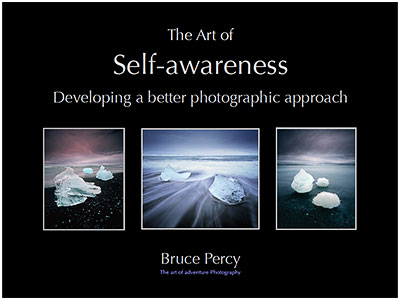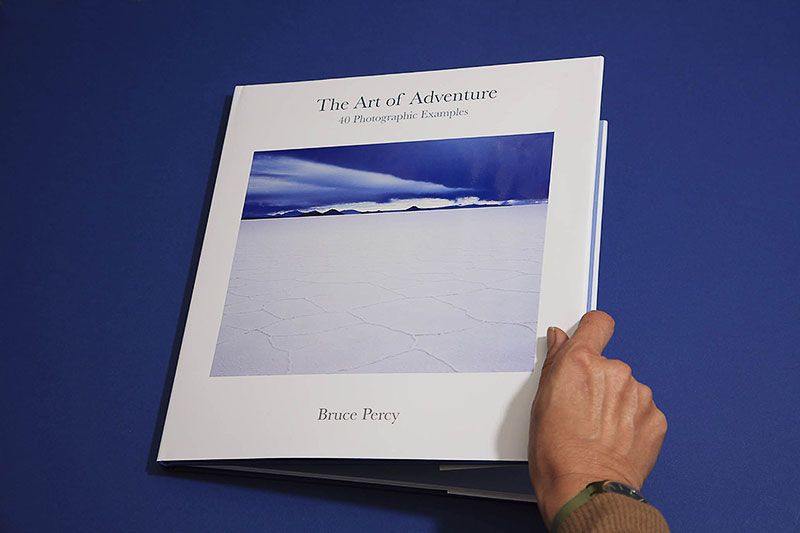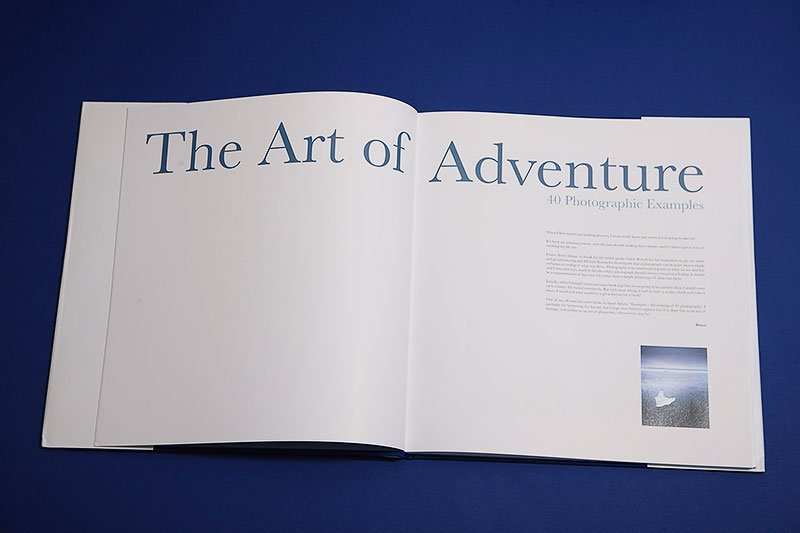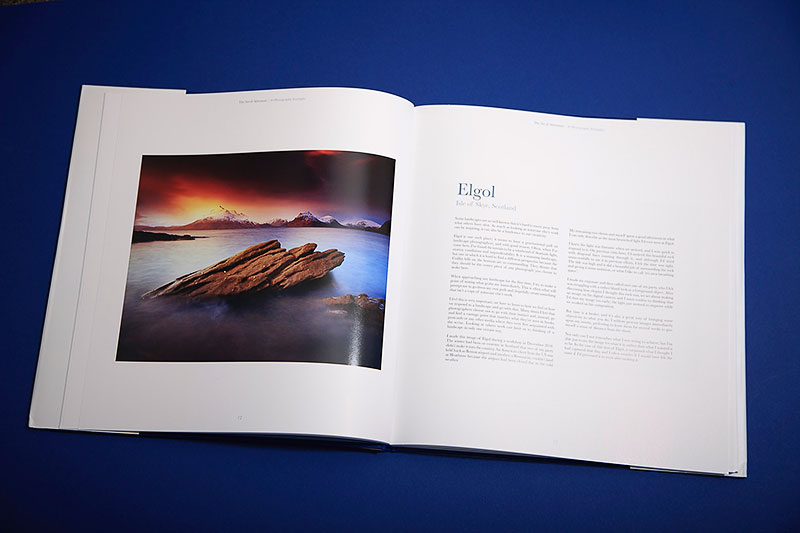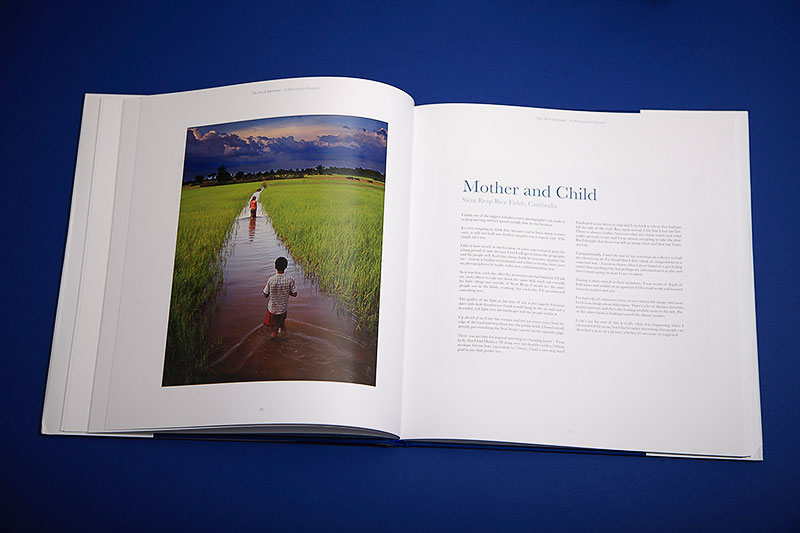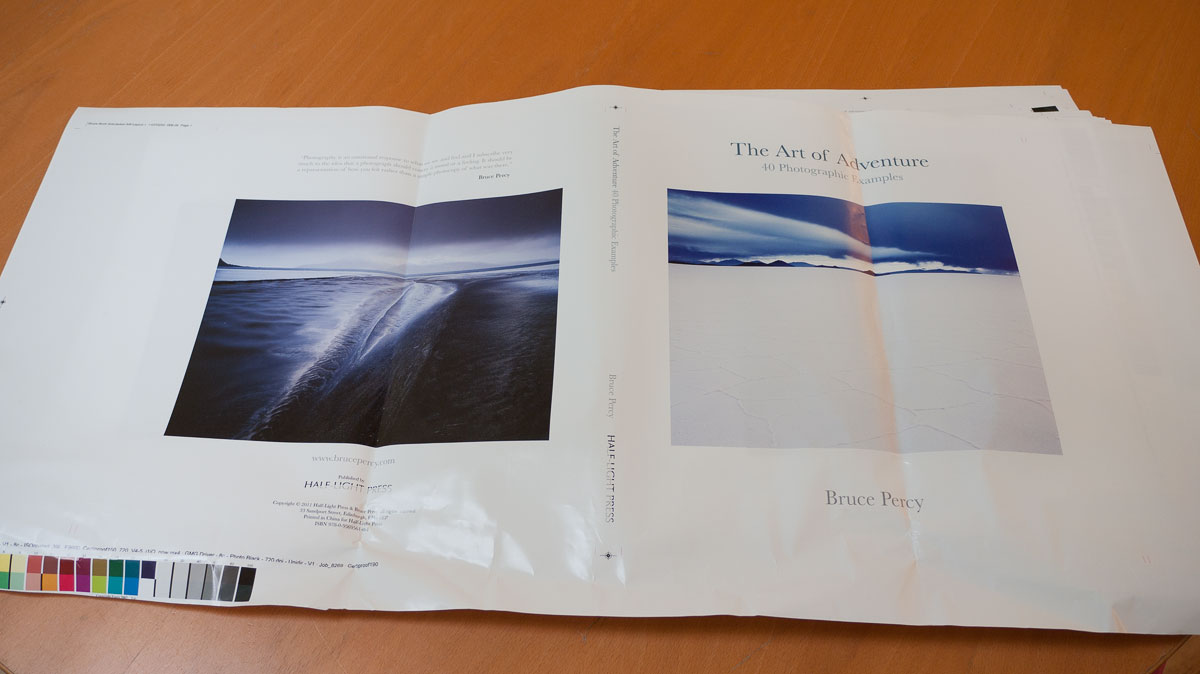If you are in or near Edinburgh this Saturday 3rd December, Neil from Beyond Words book shop will have a stall at 'Out of the Blue Drill Hall' - http://2outoftheblue.org.uk/page10.htm. He will have many gorgeous photography books with him, including (of course), copies of my own book. I'm off to Lofoten, Norway this Thursday (I have got the right day, haven't I?), for some work on future portfolio images and to catch up with some friends.
Outdoor Photography Review
Steve Watkins, the Editor of the british magazine, Outdoor Photography, kindly emailed me a copy of the magazine review for my book. I've included it below - click on the image to see the full page.
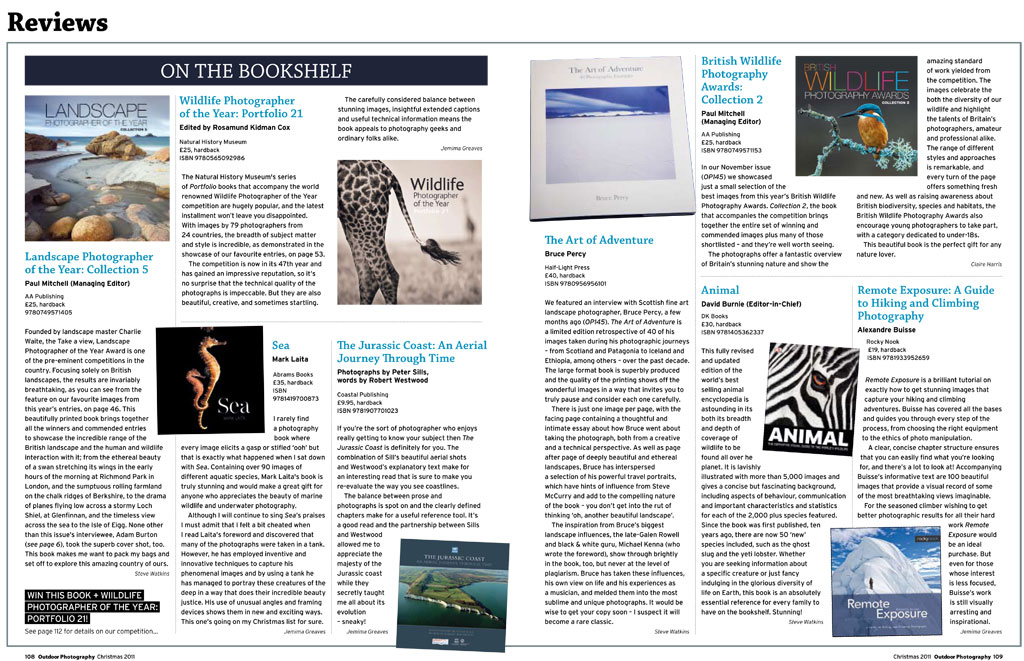 But I also include an image grab of the actual review, which I have to say, it perhaps the nicest review I've ever read about what I do. I think that Steve has 'got me' in one. Yes, I'm a Steve McCurry fan, and I've often felt that this shows in my portraiture images, and I'm also a big Michael Kenna fan (like, who didn't know this already?), so his point about my images being influenced by MK, makes perfect sense. We all have our heros, but hopefully, we don't plagiarise, but instead, we work based on inspiration. That's at least, what I try to do with my own work. Just follow your heart, and things will be fine : )
But I also include an image grab of the actual review, which I have to say, it perhaps the nicest review I've ever read about what I do. I think that Steve has 'got me' in one. Yes, I'm a Steve McCurry fan, and I've often felt that this shows in my portraiture images, and I'm also a big Michael Kenna fan (like, who didn't know this already?), so his point about my images being influenced by MK, makes perfect sense. We all have our heros, but hopefully, we don't plagiarise, but instead, we work based on inspiration. That's at least, what I try to do with my own work. Just follow your heart, and things will be fine : )
If you didn't already know, the book is available at the Half-Light press web site.
If you don't already know about Outdoor Photography Magazine, then you can follow it on facebook.
Book Feedback
For those of you who kindly bought my hardback book, it seems that many of them are dropping through the letter boxes of people in the UK this morning, and I've received some really nice correspondence so far.
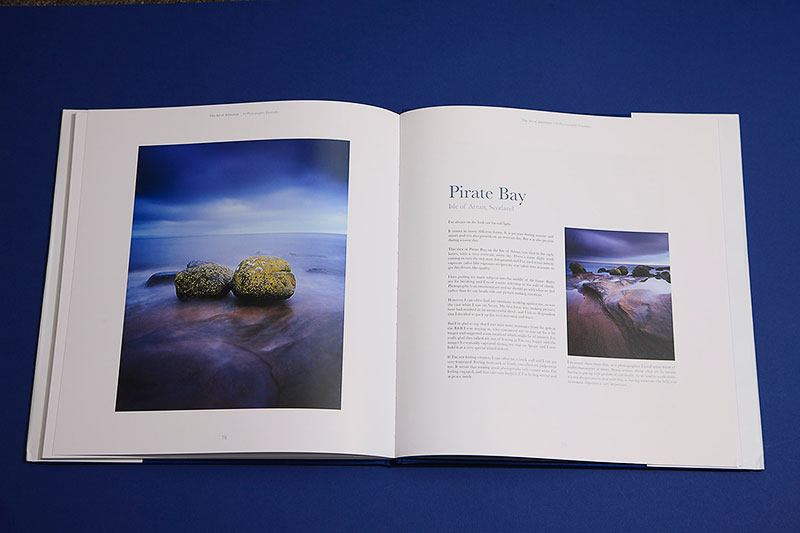
I thought I'd leave the rest of this post as it is. Maybe if you enjoy the book, you'll leave a comment here - it would be lovely to hear your impressions of the book!
I'm on the isle of Harris this week, doing a workshop, so I'll catch up with you all at the end of the week.
Enjoy the book, and I hope you get your copy this week!
A library of dust
Every now and then, I come across a book, or a set of photographs that surprise me. In the case of David Maisel's book 'A library of Dust', I'm reminded that subject matter can be found anywhere, and even the most unlikely of places can yield images that are fascinating. I'd highly recommend looking at David's site for more of his projects. There are a lot of thought-provoking themes in his work, and I've just bought two of his books because of what I've seen there.
In 'A Library of Dust', David has found over 3,000 metal canisters of cremated remains, tucked away at the back of a disused asylum. Personally, I'm not interested in the morbid aspects to these images, nor the fact that the cremated remains were that of people who were mentally unwell. That, I feel, is like looking for an angle of torment to a story. It simply does not appeal. But what does appeal, is the colours that these canisters present. As he describes them:
"The etching of the copper, and the intensely hued colors of the blooming minerals combine to individuate the canisters. These deformations sometimes evoke the celestial - the northern lights, the moons of some alien planet, or constellations in the night sky".
There's a sense of beauty to these objects.
A book like 'A library of Dust' provides beautiful images of copper canisters. They themselves are landscapes in miniature and David has wrapped them up with an interesting theme.
I'm reminded also, that photography can cover subjects much more wider ranging than just landscape or portraiture. I like to cover books like this one on my blog, to remind us, that there's a whole world of photography out there that most of us have never engaged in nor considered as part of the medium.
On that note, I'd like to say that what I do with my own photography, in the scheme of things, is rather narrow. In fact, I believe that most people who have an interest in photography often don't get further than landscapes, and within that narrow realm, some can't go beyond what they saw. I've often said that photography is not 'real'. We do not see in 2D, we do not see with wide angle lenses, and we do not have the dynamic range of a digital sensor. As human beings, we interpret, engage and respond to our surrounding environment in many ways, and for that matter, a book like 'A library of dust' is a reminder that we can go beyond the normal confines of our own aesthetics, be inspired, and perhaps find something new and and interesting to photograph.
A Library of Dust is available from Beyond Words.
New eBook - The art of self awareness
I'm pleased to let you know about a new eBook I've just released. Ever since I started to conduct photographic workshops, I've learned an awful lot about myself as a photographer. I'm sure for many of you, that might be a surprise, as you probably thought that workshops are all about the participants and how to improve their photography (they are). But in the process of working with others, I've often had to think about why I do certain things when I'm making images.
I'm not talking about technical aspects, such as what shutter speed or which aperture I chose for a particular image, but more about how I responded to a landscape the way I did, why I chose one composition over another, and perhaps more importantly, my general approach to all things creative.
We are creative people, and creative types tend to work based on feelings and intuitions they have about the work they're creating. I tend to have a lot of philosophical ideas about why I create my own work the way I do. And how I tend to respond to failure for instance. I'm highly objective about what I do, but I also allow myself to open up to what is presented to me.
So in this new eBook, I continue the themes set about in the 'Taj Mahal - a photographer's approach', and 'Lofoten - a photographer's approach', ebooks. Both of these eBooks discussed lots of ideas about how I tackle a project and how receptive I am to new ideas. In short - how I find images and how I work with the landscape.
The Art of Self awareness, a rather grand title, really tries to distill the idea that good photography lies in your own hands, and by having a clearer picture of who you are, and how you respond to your environment (or not, as the case may be), your photographic efforts may succeed or fail.
Here is a breakdown of the chapters contained within:
Contents
Bruce Percy 3 About the author
The Art of Self-Awareness 4 A better photographic approach
Iceland 6 A learning experience
Self Awareness 7 The art of looking inside in order to see outside
Re-evaluation 8 Do you take time to look back at your progress?
Failure as a gift 9 How do you react to your failures?
Organised Process 10 Do you dither and fuss?
Temperament 11 Are you impatient?
Conversation 12 Do you have a dialogue with the landscape?
Submission 13 Do you submit to the landscape?
Response 14 How do you feel when making images?
Narrow field of vision 15 Do you narrow your view to one thing?
Tuning in 16 Do you have a good sense of anticipation?
The devil is in the detail 17 Do you notice subtle changes in light, shade and tone?
Energy levels 18 How do you react when you’re tired?
Objectivity 19 Are you realistic?
Over-analysis 20 Do you over analyse?
Control freak 21 Do you fear your own creativity?
Never happy 22 Do you seek perfection or excellence?
Awareness studies 23
Well, that's quite a bit of thought provoking material there! Yes, it's taken me a while to work on this one, and I'm sure it's only really the beginning. But I grew tired of 'technical' websites years ago, and I never read any books about cameras or lenses these days. I'm much more interested in how we tick, what makes us the way we are.
My new ebook is available now, from my store.
Book Announcement
Well, the announcement says it all.
I would like to let you know that my very first hard bound book is now available for advanced order. It will ship around the 11th of November.
This book has taken some time to prepare. It's been an interesting project for me for many reason. Firstly, there is, perhaps, the issue of how does one prepare their work for print? Which images should I use? and how should the book look? Well, it turned out that this was the easy step. Bringing an idea, a concept into reality, is something that comes slowly, and this one has been coming together for more than one year.
I would therefore like to express my deepest gratitude to the wonderfully inspirational Michael Kenna for being so kind and generous with his time. Michael opens the book with a humorous and gentle reminder of what it is to be a landscape photographer.
A preview of the book is now available, along with the option to make an advanced order at the Half-Light Press web site. The first orders will go out on the 11th of November.
In the meantime, here are some nice shots of the book, made by my friend Darren in his studio:
Please visit the Half-Light Press web site for more information and to make an advanced order. The first orders will go out on the 11th of November.
Advanced copies of my book arrived
Yesterday I received four advanced copies of my book. I just thought I'd write a short post today to tell you all that the book printing quality has far exceeded my expectations.
I've heard so many scary stories of people having trouble with printers and the book quality not matching what they were looking for. I'm now of the opinion this is perhaps due to one of two reasons:
1) The photographer did not have a colour managed system
2) The printer is old-school and is not colour managed either
My printer is well regarded for making high end art books and their process conforms to the FOGRA ISO standard. The proofs I received were very accurate - matching what I saw on my calibrated system at home, and the final books match the proofs, but exceed in terms of final paper and contrast quality.
The book is going to be photographed this week, so I will post some images as soon as I have some to show you.
Edward Burtynsky - Manufactured Landscapes
Many years ago, when I first decided to venture out there, and conduct my first photographic workshop, I set it up in Torres del Paine national park in Chilean patagonia. My clients included two Canadians who spent their time talking to me about many photographers. One of their idols was Edward Burtynsky. I'll admit that at that point in my photography, I'd never heard of him.

But the world is full of talented individuals.
After the workshop, I parted company with my Canadian clients, and went home for a long earned rest. A few weeks passed, and one morning the door bell rang. The post man stood outside my door holding a large cardboard carton. I took it inside and wondered what might be inside. Upon opening the box, I found a copy of 'Manufactured Landscapes' but Edward Burtynsky. It had been sent to me by my Canadian clients, I'm sure, as a response to our conversations during the Patagonian workshop. The gesture blew me away because I realised that what we had been discussing during the trip had resonated with them in such a way that they felt inclined to send me a copy of one of Canada's most prominent photographers.
Also included inside the box, was a copy of Pico Iyer's short story about visiting Iceland. I had discussed Iceland with my Canadian clients, and in particular - Mary, had felt a connection with my stories of the country, and the short story of Iceland by Iyer, and had decided to include a photocopy of the story for me. It was a great read and it reminded me very much of my first time visiting Iceland in 2004 (I now own a copy of Pico Iyer's book of short stories about his travels - thanks to Mary).
Anyway, I digress. I'd been sent a present! And that present was the result of some engaging conversations during the workshop in Patagonia.
I wasn't familiar with Burtynsky's work, but when I looked through the finely printed coffee table book, I became very engaged in what I saw. I had no reason to read the text, because contained within the pages were high detail (large format) photographs of mass-scale ecological production / waste management throughout the world. I had simply no idea, for instance, that there exists rivers of molten steal, landscapes of worn out tires, sky rise blocks of mined chalk, all consumables, all on a mass scale, all which could be easily interpreted as some normal landscape, until I looked a little closer and realised that this was all the product of a race that consumes and discards with little or no thought for the finite resources of the planet. Burtynsky was spelling out mass-scale environmental issues simply by using his large format camera to capture the finer details in a massive landscape of consumable, or discarded, material.
This week I dug out Manufactured landscape by Burtynsky. It is an absorbing volume. A large scale coffee table book, beautifully printed, the cover gives the illusion of a natural landscape (I thought lava flows, only to discover that it is a man-made landscape of molten steal)... sometimes we need to look at industrialisation in its rawest form. Landscape photography is not just about capturing the essence of natural beauty in the word, it can also be a valid way of throwing up a mirror and exposing ourselves to who we really are, and how we treat our environment.
Highly recommended.
You can, of course, get it from Beyond Words here.
Publish your Photography Book
A few weeks ago, Neil from Beyond Words Books gave me a copy of the book 'Publish Your Photography Book' by Darius D Himes & Mary Virginia Swanson. Which I will now refer to as PYPB in this review.
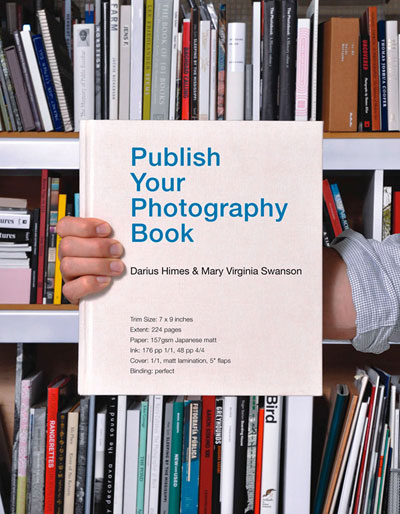
Before you decide that this article is not for you - stop. There is no reason why you shouldn't put your own book together, as I'll explain further down.
I remember thinking 'oh, perfect timing', as he surprised me with it, as I've just finalised the proofs for my own book, paid the remaining amount due to the printer and am now eagerly awaiting some advanced copies of the book.
So yes, I thought the timing of receiving this book was a little off. But perhaps because I've gone through the process of putting my own book together, it's been really interesting reading PYPB. I think there's a lot of useful information in here if you're considering publishing, or getting published because it has plenty of case studies from publishers and also photographers on how their book idea came about and how it moved from being an idea into something real.
I don't think this book would have helped me get published, or help me get round to self publishing - that kind of thing really needs you to have a sense of drive and determination to overcome plenty of odds. What this book does though, is help plant some seeds, make you think more about why you want to publish a book and perhaps the most important question of all: what market the book should be about - who is it aimed at.
In particular, what I found most interesting was that 'best of' books aren't a good idea. Books that sell have a strong theme rather than being a collection of all your best images into one bundle. I can appreciate that this would be true for most photographers that no one has heard of - sure - the photos should speak for themselves, but most people want to know what it is they're buying and why would you want to buy a collection of nice photos from anyone if there's no solid theme or message contained within?
This caused me a little panic at first, since my forthcoming book is more or less a retrospective of images I've shot over the past 10 years. But I soon calmed down when I remembered that I also decided my book should have some form of teaching and message contained within for the reader. Each image has a text that explains the making of and also thought processes I went through. But I also realise that most of the people who will be buying my book, are buying it because they know who I am, and they like my work.
Anyway, if you are considering making your own book - and it doesn't have to be a grand affair - some of the examples discussed started off life as inkjets bound together in to hand made volumes to sell. I think it's a really fascinating thing to do. If you print your images and like to frame them, then putting a hand made book together is no different from this - it is a way of collecting a body of work together and giving a form of closure as well as a final purpose for the work.
There are many book project case studies contained within PYPB to make it an interesting read, simply because of the creative decisions. Everyone is entitled to think about putting a book together - many people do it via Blurb for instance. PYPB helps you think about reasons for publishing, what your market is, and what type of photography book might be the best idea for a project.
Putting a book together is like working on any concept. It's an inspiring adventure and it can also bring a lot of purpose to your photography. If you are suffering from a lack of ideas or direction in your own photography, then I would urge you to consider setting up a project of some kind - and a book is a great way of visualising the final outcome. Having that final goal in mind can do wonders to spur your creativity into action and give you something to get your teeth into.
Above all else, it's a fascinating read as I love to hear about people's creative decisions.
You can get it from Neil's Beyond Words book store.
Last batch of book proofs
Today I received the last batch of proofs from the printer of my book, and I'm very happy with what I see.
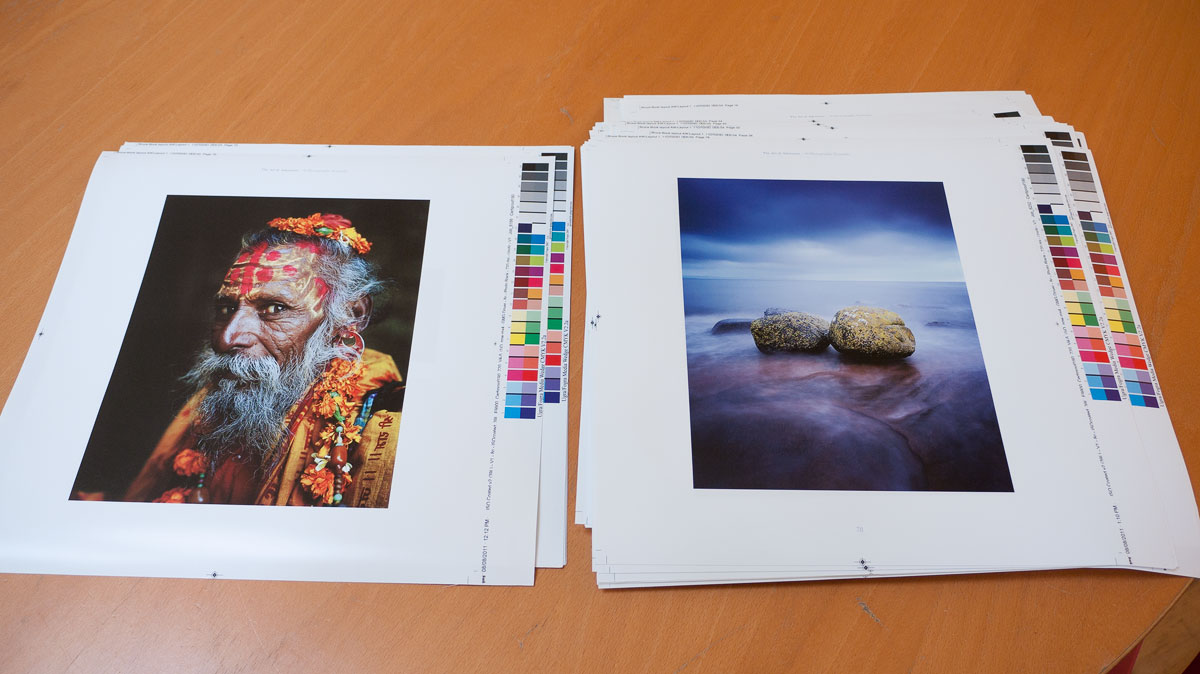
They are printed on FOGRA approved paper. Which basically means that the paper is certified to be within a certain ISO colour standard. The have also been printed using one of the best CMYK simulation RIP's available (GMG). In a nutshell, the proofs give a very accurate simulation of what the final press output will be like.
It's been a very exiting and interesting project, working on this book, and I feel I've learned a lot in the process too.
Once I've approved the proofs, the next stage will be onto printing the book. I'll give you all more details about the expected arrival date of the book once we're past the proofing stage. Until then, I can't really say for sure just when the book will be here, but I'm hoping for sometime around October or November.



